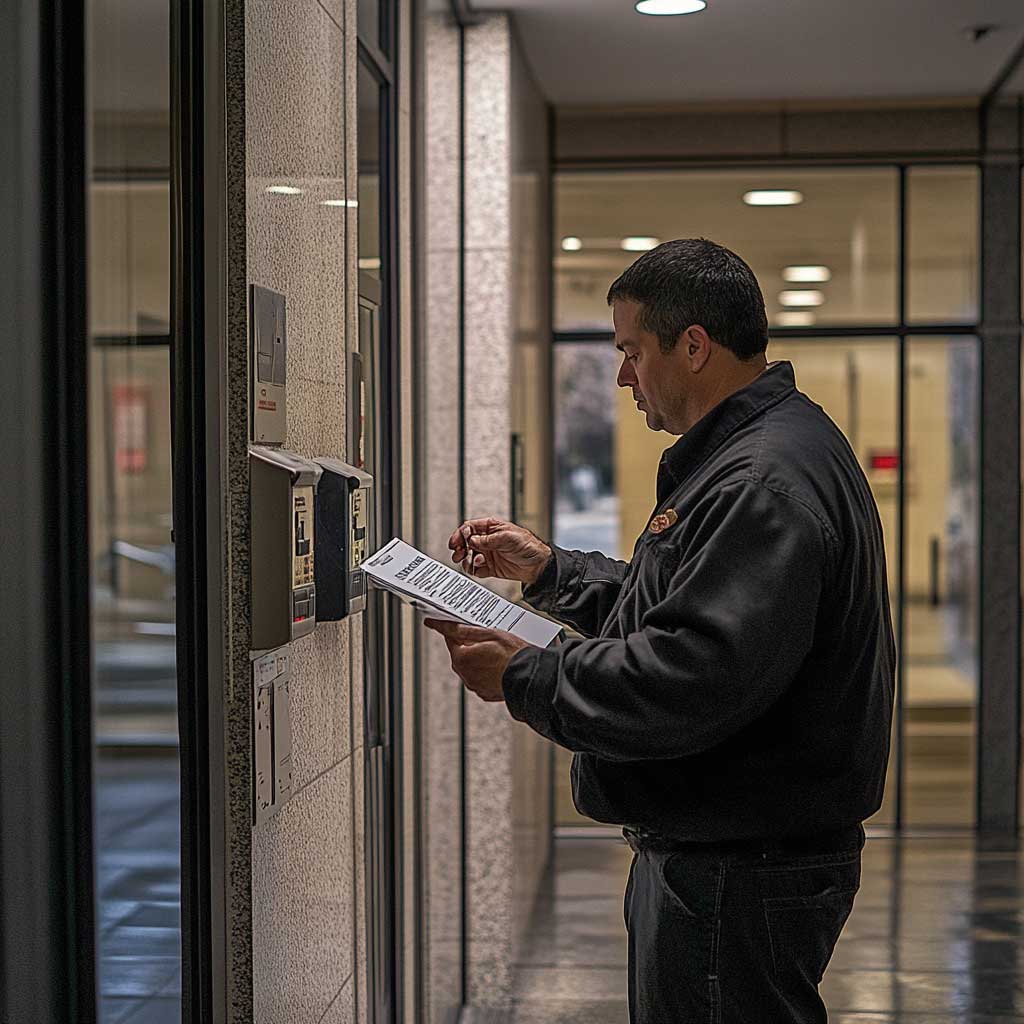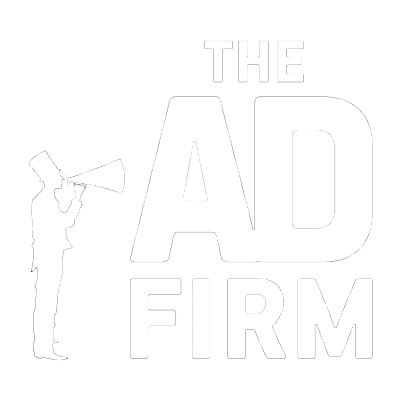Regular fire alarm inspections are crucial for legal compliance and safety management and critical to a proactive fire safety strategy. By detecting malfunctions and ensuring all system components meet current fire safety standards, these inspections and targeted safety training significantly reduce the risk of violations, avoid costly penalties, and minimize operational disruptions. Rigorous adherence to inspection schedules demonstrates a business’s commitment to safety and helps maintain a secure environment, protect lives and property, and ensure uninterrupted business operations.
Get in Touch for Fire Protection Services
Common Fire Alarm Violations & How to Avoid Them
Understanding and addressing common fire alarm violations is essential for maintaining building safety and legal compliance. Fire alarm systems are pivotal in safeguarding occupants, and lapses in compliance can have serious legal and safety repercussions. Below are some prevalent violations and practical tips to prevent them:
Inadequate Maintenance and Testing
- Frequent Issue: Often, violations arise from overlooked maintenance and inadequate testing of fire alarm systems, risking ineffective response in emergencies.
- Prevention Tips:
- Schedule Regular Inspections: Commit to a consistent inspection timetable as outlined by the NFPA and local codes conducted by certified professionals.
- Maintain Documentation: Keep records of all maintenance and tests to track system performance and validate compliance during audits.
Improper System Installation
- Common Error: Incorrect installation of components, such as misplacing smoke detectors or using incompatible elements, can cripple system functionality.
- Prevention Tips:
- Employ Certified Installers: Use only qualified and licensed technicians for installations and corrections to ensure adherence to the highest fire safety standards.
- Follow Guidelines: Ensure all setup actions comply with manufacturer specifications and local regulations.
Obstructed or Disabled Equipment
- Typical Violation: Fire safety components become less effective when obstructed or deliberately disabled.
- Prevention Tips:
- Inspect for Obstructions: Regularly check that no furniture, decor, or debris blocks any components.
- Enforce Non-Tampering Policies: Educate and enforce strict rules against tampering with fire safety equipment.
Addressing these issues through diligent maintenance, proper installation, and ensuring unblocked, active components significantly reduces violation risks and boosts safety compliance.
Importance of Clear Exits and Evacuation Routes
Ensuring that exits and evacuation routes are clear and well-marked is critical to any fire safety strategy. Such measures comply with fire safety regulations and are vital for enabling quick and safe evacuation in emergencies. Properly designed and maintained pathways prevent potential injuries and ensure a structured departure during crises.
Critical Factors for Effective Evacuation Routes
- Visibility and Illumination of Exit Signs: Exit signs must be visible, illuminated, and well-placed to guide occupants toward safety, visible from different angles and distances within the building. Emergency lighting should be robust to maintain visibility in power outages.
- Accessibility of Exits: All exits should be free from obstructions. Routine checks are necessary to ensure pathways and exit doors are clear and functional, accommodating rapid evacuation without bottlenecks.
- Compliance and Inspections: Adherence to fire safety codes regarding the number and type of exits is crucial for accommodating all building occupants safely. Regular inspections verify that exits meet legal standards and operational requirements.
Design Considerations for Evacuation Routes
- Pathway Specifications: Design pathways to facilitate easy movement, accommodating everyone, including those with disabilities. Factors like width, slope, and surface condition should support swift movement.
- Strategic Signage: Place evacuation maps and directional signs at strategic points within the building. Design these signs to be instantly understandable, using universal symbols to communicate evacuation routes and procedures effectively.
Training and Drills
- Regular Evacuation Drills: Conduct drills under various conditions to ensure occupants are familiar with exits and procedures. This practice helps identify and rectify bottlenecks or confusion in real-time scenarios.
- Staff Training: Train key personnel to manage evacuations efficiently, including operating emergency systems and assisting those needing help.
- Continuous Improvement: Use feedback from drills to refine evacuation strategies and update training protocols, enhancing overall safety preparedness.
By focusing on these areas, businesses can significantly enhance the safety of their premises. Clear, unobstructed exits and well-marked evacuation routes are essential for protecting all building occupants, acting as a critical factor in effective emergency response strategies. Investing in thorough planning, regular maintenance, and comprehensive training demonstrates a commitment to safety and regulatory compliance, ensuring that all individuals in the building can evacuate quickly and safely during emergencies.
Get in Touch for Fire Protection Services
Staying Informed about Fire Safety Regulations and Working with Qualified Providers
In the ever-changing field of fire safety, staying updated on regulatory changes and engaging with adept service providers are key to robust safety management. These practices are crucial for compliance and enhancing building security.
Regulatory Compliance and Safety
- Keeping Current: Regularly monitor fire safety regulation updates to stay compliant and adapt to new requirements.
- Proactive Adaptation: Anticipate and swiftly adapt to changes to mitigate non-compliance risks and enhance safety measures.
- Seamless Implementation: Implement updates diligently to maintain uninterrupted operations and safety standards.
Continuous Education and Adaptation
- Training and Development: Conduct frequent training to embed a deep-seated culture of safety and readiness.
- Upgrading Systems: Regularly review and improve fire safety equipment to align with current technology and standards.
- Policy Updates: Update safety protocols regularly to reflect the newest fire safety regulations.
Choosing the Right Fire Alarm Service Provider
- Provider Selection: Choose providers based on their certifications, experience, and the specific needs of your business.
- Comprehensive Services: Opt for providers that offer extensive services from system design to emergency repairs, ensuring a comprehensive safety strategy.
- Technological Sophistication: Prioritize providers that utilize the latest technologies, like smart alarms, to enhance system responsiveness and efficiency.
Routine Maintenance and Compliance
- Systematic Inspections: Ensure all system components function optimally through regular professional inspections.
- Preventive Care: Maintain routine upkeep to prevent system failures and minimize emergency costs.
- Cost Management: Employ effective maintenance strategies to extend equipment life and reduce long-term expenses.
By adopting these structured practices, businesses can adhere to strict fire safety regulations and effectively manage potential emergencies, thereby enhancing the overall safety and well-being of all stakeholders.
Implementing these strategies is essential for safeguarding your business operations, protecting property, and ensuring the safety of all occupants. Proactive fire safety management not only meets compliance requirements but significantly contributes to the well-being of everyone involved.
For expert fire protection services solutions tailored to meet your facility’s unique needs, consider partnering with Aura Fire Safety. Our commitment to excellence and comprehensive service coverage ensures that your fire safety systems are handled professionally and carefully.
H2 Related Articles
- A Deep Dive into NFPA Compliance: What San Francisco Property Owners Need to Know
- San Francisco Property Owners: Is Your Fire Alarm Compliant With Recent Code Changes?
- Tenant Safety: Ensuring Fire Compliance in Multi-Unit Buildings
Get in Touch for Fire Protection Services



 The Ad Firm
The Ad Firm